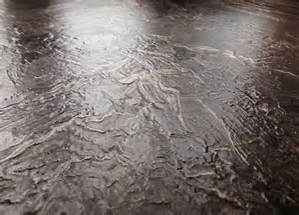What is the single most important thing that can affect the resale value of your home? Your Kitchen! In fact you can focus it down even further to your countertop.
Due to the multitude of “Home Renovations’ shows available today, everybody seems to be looking for the same things in their homes, open kitchen layouts, oversized appliances, functioning islands and granite. (Not to be confused with “Stone” countertops. To see the difference please visit our other blog)
What is Granite?
Granite which is classified as an igneous rock is mostly composed of two minerals: Quartz and Feldspar. Granite is widely available since most of the earths crust is comprised of granite. It’s beauty and appeal lie in its varied colors and patterns. In fact the word “granite” comes from a latin word for “grain” highlighting the beautiful design characteristics of the rock.
Because it is a natural product mined from the earth, there are attributes that come with it, cracks and fissures. The difference between the two being that fissures are a result of what happens when multi-colored materials (like two different types of minerals) cool down together when the rock was forming. This process leaves behind a line or fissure between the minerals . Whereas a crack is a separation of the minerals or material. A crack represents a failure in the strength of the rock. You can easily see a crack by shining a light across the stone. There will be an interruption of the light across the stone where a crack is present, whereas a fissure can be seen through color variations.
Because of these naturally occurring events, granite is a porous material. And it requires a little bit of TLC, which usually comes in the form of sealing your granite.
Choices Choices and more Choices
Once you decide which granite you want in your home, your decision making is far from over. You will be met with a lot of options like: edges, polish and thickness. Although there are industry standards for some of these, a lot will depend on your manufacturer.
Edges

Edges are exactly what they sound like, edges to your countertop. They can routered and polished when your countertop is being fabricated. This is all based on preference and taste. Common edges are Eased, Ogee, Dupont and Waterfall, but your countertop fabricator will have samples available for you to see
Polish
The polish to granite can be basically divided up into 3 categories. Polish, Hones and Rough.

Polish complements the qualities of the minerals in the granite, lending to a high gloss, mirror like shine on your countertop surface. This process is achieved by the granite going thru an extensive 19 stage grinding process, making it the focal point of your kitchen.

Rough or other terms like leathered, brushed antiqued and vintage are used to describe a softer finish to your stone. Through many processes, this type of finish highlights the beautiful characteristic of the stone itself. And because each stone is different, the result of this finish depends on the character of the minerals in the granite itself.
Often appearing in larger islands, this granite finish, complements your kitchen design, and its pretty addicting to touch.

Honed describes a satiny finish. Although the granite goes thru the same process as the polished, it stop somewhat short of it journey to the polish stage to achieve this look. (Polished usually goes thru 19 stages whereas the Honed will stop after 10 stages)Because it does not have a high gloss finish, it does not reflect light as much polished does, it absorbs the light, and reflects it in a more subtle fashion..
How to Maintain your Granite
As previously mentioned, sealing your granite is your primary step in preserving it. Due to variations in the stone and it usage in your home there is no One Rule for when you should seal your granite. (Ranging from 6mos-yearly)
A simple water absorption test, can determine when you should seal your granite. If water spreads and thins out over the countertop instead of beading up, then you should seal your granite. There are many sealer products available in your local hardware stores and generally the instructions are the same. Always read thru the instructions, before applying the sealer.
For daily care and maintenance it is advised to use neutral ph cleaners or soap and water to sanitize your granite. Harsh chemicals can prematurely strip your sealer from your countertop, thus exposing your stone to staining.
And as with all countertops, no direct cutting or placement of hot pots or pans should be done to your countertop surface, including granite.
But what should you do if the unthinkable happens, you chipped your granite? Thankfully today there are products available that can fix most chips in your countertop. The usual method is utilizing an acrylic paste that can be hardened using a UV light. Then the paste after hardening can be sanded and polished, leaving your countertop whole once again.
All in all, granite is a beautiful addition to your home, its natural formation makes each piece one of a kind and with proper care it will last.
www.patinstall.com, IKEA Kitchen, Certified Installer
